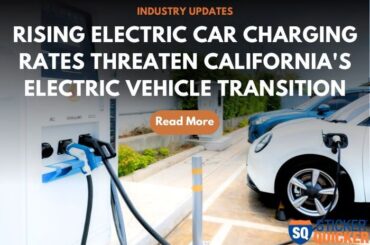What Determines the Cost of SUVs, Cars, and Trucks?
The price of SUVs, cars, and trucks is determined by a variety of factors, including:
- Production Costs: The cost of producing vehicles can affect the price. Factors such as the cost of materials, labor, and manufacturing equipment can contribute to a vehicle’s overall production cost. Additionally, the cost of microchips, critical car parts, is a significant cost factor for many vehicles.
- Brand Name: The brand’s reputation can also affect the price of a vehicle. High-end luxury brands, for example, may charge more for their cars because of their reputation for quality and performance.
- Features and Options: The features and options included in a vehicle can also affect the price. For example, a car with advanced safety features, a high-performance engine, or luxury amenities will typically be more expensive than a basic model.
- Competition: The competition in the market also plays a role in determining the price of vehicles. If there are many similar models available from different manufacturers, prices may be lower to attract buyers.
- Supply and Demand: The supply and demand of vehicles can also affect the price. If demand is high and supply is low, prices may be higher. Conversely, prices may be lower if supply is high and demand is low.
- Government Regulations: Government regulations such as emissions standards and safety requirements can affect the price of vehicles. Manufacturers may have to invest in technology to meet these regulations, which can increase the cost of production and, ultimately, the price of all vehicles.
- Taxes: Taxes and tariffs such as import, sales, and excise taxes can also affect the price of vehicles.
Overall, the price of SUVs, cars, and trucks is determined by a combination of factors that can vary depending on the specific model, brand, and market conditions.
What Did Cars Cost in 2021 and 2022?
Recently, the cost of cars, SUVs, and trucks has been affected by some factors, including production costs, supply and demand, and government regulations.
In 2021, the cost of these vehicles has been affected by many additional factors, including the ongoing microchip shortage and the economic impact of the COVID-19 pandemic.
In 2021, the microchip shortage has increased production costs for cars, SUVs, and trucks. The shortage has decreased the availability of microchips, which are critical parts for vehicles. This has caused production delays and increased the cost of producing vehicles. Additionally, with the ongoing pandemic, the supply chain has been impacted, leading to shortages of other components and raw materials, which has also increased the cost of producing vehicles.
The demand for cars, SUVs, and trucks has also been affected by the economic impact of the COVID-19 pandemic. The pandemic has led to job losses and economic uncertainty, which has decreased consumer demand for vehicles. This has led to a price decline for some cars, as manufacturers have had to lower costs to attract buyers.
Additionally, in 2021, government regulations have affected the cost of cars, SUVs, and trucks. Government regulations such as emissions standards and safety requirements can increase the cost of production and, ultimately, the price of vehicles.
Looking to 2022, these factors affected the cost of cars, SUVs, and trucks. The microchip shortage continued to impact the production and availability of vehicles, which led to further increases in the price of cars, SUVs, and trucks. Additionally, the economic recovery from the pandemic leads to an increase in consumer demand for vehicles, which lead to a rise in prices.
Overall, the cost of cars, SUVs, and trucks in 2021 and 2022 has been affected by several factors, including production costs, supply and demand, and government regulations. The microchip shortage and the economic impact of the COVID-19 pandemic have significantly impacted the price of vehicles.
What Is Determining Vehicle Prices in 2023?
In 2019, Americans purchased around 326,000 electric vehicles (EVs). However, by the first eleven months of 2022, that number had risen to 724,000, according to data from Motor Intelligence. Despite this, demand for EVs is strong enough that these numbers would be even higher if not for supply chain issues. Long waitlists for new EVs like the Ford F-150 Lightning and popular electric SUVs like the Tesla Model Y and Rivian R1S will likely continue.
While an increasing number of new models from established and new brands such as VinFast and Fisker will make EV purchases more mainstream, high prices and policy changes that limit subsidies for EVs may dampen the excitement.
The cost of new vehicles, particularly EVs, remains high due to lingering supply chain problems and difficulty sourcing materials. Only the Chevy Bolt EV and EUV made significant price cuts this year, while the cost of metals such as lithium, cobalt, and nickel has risen.Additionally, the ongoing chip shortage could affect up to 3 million vehicles next year, a disproportionate number being EVs.
The Inflation Reduction Act passed by President Biden also changed the subsidies for “clean” cars, making them dependent on factors such as buyer income, vehicle price, and North American-based manufacturing and sourcing rather than just sales numbers.
Starting in January 2023, as many as 70% of the electric and plug-in hybrid vehicles that were previously eligible for the tax credit will lose that incentive due to strict rules on battery sourcing and vehicle price caps. Despite these challenges, the appeal of low energy costs amidst rising gas prices and the availability of new models may encourage more first-time EV buyers, mainly if 2023 sees another summer of high gas prices. In addition, improvements in public charging stations will make it more convenient for drivers to recharge away from home.
Car Prices in 2023
In 2023, the market is expected to be more stable, but it will not be the same as before. The supply chain for vehicles will improve, resulting in high prices for older used cars. However, interest rates for auto loans and leases will be higher, making it more cost-effective to buy a new car instead of a used one. Additionally, the possibility of a recession in the first half of 2023 may decrease demand and further lower prices. Despite this, the car market is undergoing significant changes, and 2023 will not be a year of great deals.
Works Cited:
https://www.usatoday.com/story/money/cars/2022/12/22/car-prices-drop-2023/10943873002/
https://www.forbes.com/wheels/features/car-market-outlook-2023/
https://www.carsdirect.com/deals-articles/will-car-prices-go-down-in-2023
https://www.carsdirect.com/deals-articles/will-car-prices-go-down-in-2023






